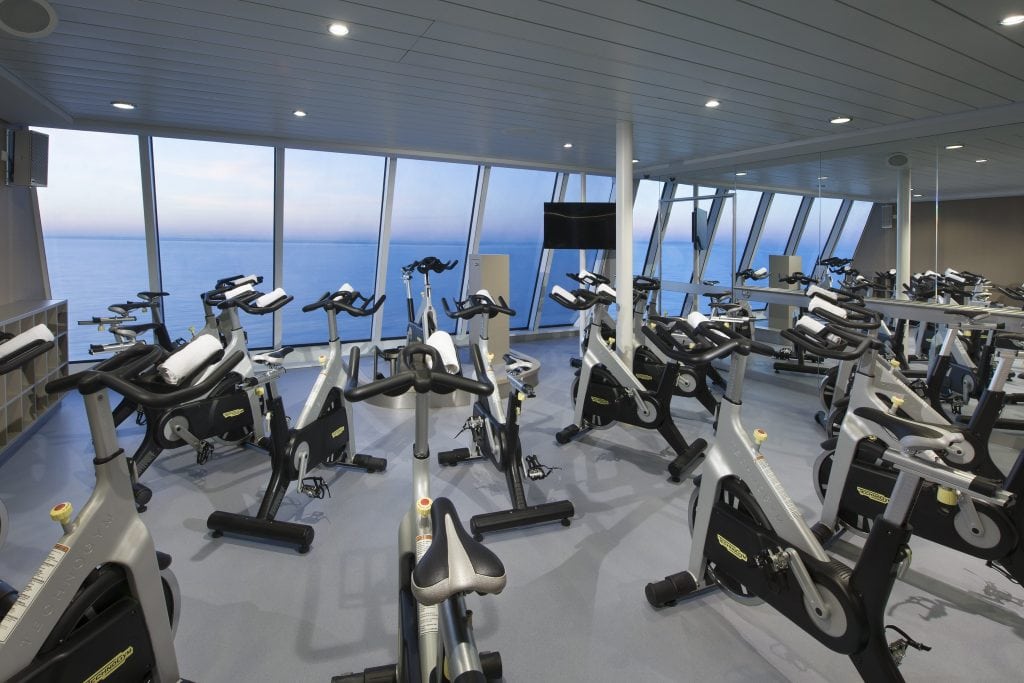Skift Take
A new cruise line is betting that focusing on a specific market niche will be a winning strategy. We look at the game plan behind the new fitness-focused concept and consider whether it can work out.
Plenty of ocean cruise lines are adding wellness-themed offerings to their ships in order to appeal to health-conscious consumers, and in the next couple of years, a cruise line specifically focused on healthy living wants to join them.
Blue World Voyages is the brainchild of Miami-based fitness entrepreneur Gene Meehan, who wants to buy three medium-sized passenger ships and retrofit them to accommodate 300 wellness-minded passengers.
The company plans to remove cabins to create an entire activity deck, complete with a basketball court, a baseball hitting cage, golf training and simulation, and a huge health center and spa. There will also be healthy menus and educational programming focused on wellness.
John Richards, who served as chief marketing officer of the now-defunct Royal Viking Line, became CEO of Blue World Voyages last summer.
“There’s a lot of sameness in the industry. If you can bring something distinctive and new to the table, it has a reason for being,” Richards said. “The biggest objection to cruising is the sedentary nature of it all. [Blue World appeals to a] sophisticated, younger-on-average than the typical luxury cruiser, someone who wants an active experience, but still wants to travel to interesting places.”
According to Richards, the line will attract passengers who might otherwise book on the likes of Seabourn or Regent Seven Seas, both of which offer their own wellness concepts (Seabourn teams with Dr. Andrew Weil, and Regent Seven Seas has a Canyon Ranch facility on board).
The financing of the new cruise line is somewhat unusual. It started with a crowdfunding campaign, designed in part as a publicity play — not a typical approach in the industry, which requires significant capital to get off the ground. Large new ships often cost more than $1 billion, and much smaller luxury vessels can cost hundreds of millions. While buying an older ship saves money, renovations aren’t cheap.
“This initial funding salvo is partly for marketing and publicity,” Richards says.
Blue World representatives told the Miami Herald last year that the company already had investments totaling $15 million and expected crowdfunding efforts to raise another $10 million.
Crowdfunders will get a reserved spot on the ship during the inaugural year. Richards calls it “an interesting twist in terms of setting the initial passenger commitment, as it establishes a database of potential passengers.”
Crowdfunding will only make up 5 to 10 percent of the total take. The sale of 25 to 30 onboard condominiums will raise more cash. Richards expects these assets to sell for between $1 and $2 million.
The complicated financing scheme is taking a longer to realize than initially planned. When the company launched last spring, the idea was to sail this year. However, Blue World Voyages has not secured full financing, and neither has it purchased a craft to retrofit. Given that renovation will take at least six months, an expected 2018 christening will have to wait until at least 2019.
Even though there’s no ship at this point, the venture is more than a pipe dream. A roster of executives is on board. Interestingly, though, very few of them have significant or recent cruise experience.
“If you are trying to do something new and bring a new point of view to the business, you need to do something broader than what the industry has done. [Operationally], we are trying to bring in people who have expertise in the activity area they are overseeing. We will bring in the cruise people, but they aren’t the ones driving the mindset of what’s there,” said Richards.
Veteran travel industry analyst Henry Harteveldt believes the industry “needs a kick in the pants,” but he has serious doubts about the concept.
“This is an idea with limited potential and a lot of risk,” he said. “I’m not convinced there are enough people [interested in wellness cruising] to make this a viable business.”
Stewart Chiron, known as The Cruise Guy, has worked in the industry for nearly 30 years and agrees that the venture is something of a “long shot”.
“Passage on smaller ships means significantly higher prices, so many people in their target market may be priced out,” he says.
“They’re taking a small, segmented group of passengers from larger ships and attempting to place them on their own ship with like-minded people,” Chiron said. “They’re not really fulfilling a need, but attempting to create one.”
Byrne Hobart, an consumer analyst for equity data research firm M Science, sees two sides to the equation.
“The cruise industry has had several strong years, and their demographic has broadened enough that a more focused concept like this one could do well,” he says.
“[However], larger cruise operators benefit from increasingly sophisticated data operations,” Hobart said. “To the extent that there’s specific demand for more health-centered cruises, larger companies have a head start in identifying those customers and a leg up in targeting them.”
To the naysayers, Richards, the former president of North American operations for Starbucks says, “Starbucks changed the way people think about coffee. Starbucks did coffee a different way and we became the big player because we executed so well. We want to be that for cruising.”
To use Starbucks lingo, it will be a tall order.
The Daily Newsletter
Our daily coverage of the global travel industry. Written by editors and analysts from across Skift’s brands.
Have a confidential tip for Skift? Get in touch
Tags: cruise, luxury, wellness
Photo credit: Fitness will be a key part of the Blue World Voyages offering, but the cruise line will be competing with larger rivals that also have exercise options. Pictured is the spinning room on Royal Caribbean International's Anthem of the Seas. Royal Caribbean International
